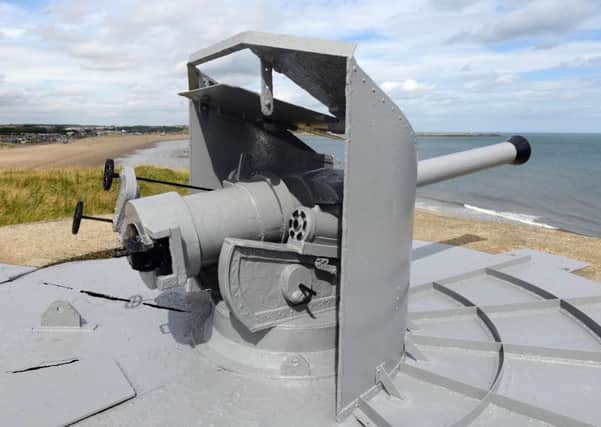South Shields ‘Big Gun’ landmark dropped from coastal project


Leaders of the Seascape project have shelved adding the Victorian-era Trow Rocks gun placement in South Shields to the six-year-long scheme.
They admit to having to prioritise other elements of a venture which aims to inspire the public to discover the North East coastline’s history, geology and environment.
Advertisement
Hide AdAdvertisement
Hide AdHowever, the upgrade of a weather-beaten concrete stepped area leading to Marsden beach – a mile further south – remains a key goal.
It contains a disused lifeguard station and a canoe store which are expected to be pulled down and the steps close to the water rebuilt.
Seascape, a partnership and community programme to protect and celebrate a 35-mile coastal stretch from South Shields to Teesmouth, at Middlesbrough, was announced in late 2017.
Supporters will submit their full proposals to the Heritage Lottery Fund (HLF) by early August, with a final decision on whether to approve funding expected in December
Advertisement
Hide AdAdvertisement
Hide AdHeritage Coast officer Niall Benson said: “We have had to prioritise and that means that gun placement will not be part of our final plans.
“It’s always disappointing when some idea that is put forward can’t be delivered, but we have to be pragmatic about it. There are competing priorities.
“The steps are part of the programme and will be developed to ensure that people can access the beach at Marsden.
“I’m confident that we will get the funding that we are applying for, the heritage elements associated with our plans are very strong.”
Advertisement
Hide AdAdvertisement
Hide AdTrow Rocks’ ‘Disappearing Gun’ was installed in 1987 and is a replica of a metal sea defence weapon trialled exactly 100 years earlier.
Under the Seascape plan, it could have been removed, with work done to redevelop the original concrete housing that remains in place.
Nationally, dozens of schemes are planned, each aiming to increase the public’s understanding of what is above and below water, including shipwrecks, and improve access to beaches.
They include creating ‘snorkel safaris,’ producing a virtual reality wreck diving experience and offering opportunities for people to enjoy being on and in the sea.
Advertisement
Hide AdAdvertisement
Hide AdLed by the Heritage Coast Partnership, partners include the councils of South Tyneside, Sunderland, Durham and Hartlepool, the National Trust, Northumbrian Water, and the Durham Wildlife Trust.
Also involved are North East Inshore Fisheries and Conservation Authority, Natural England, Groundwork, Marine Management Organisation, the Environment Agency, East Durham Heritage Group, Donnison School and Durham and Newcastle universities.